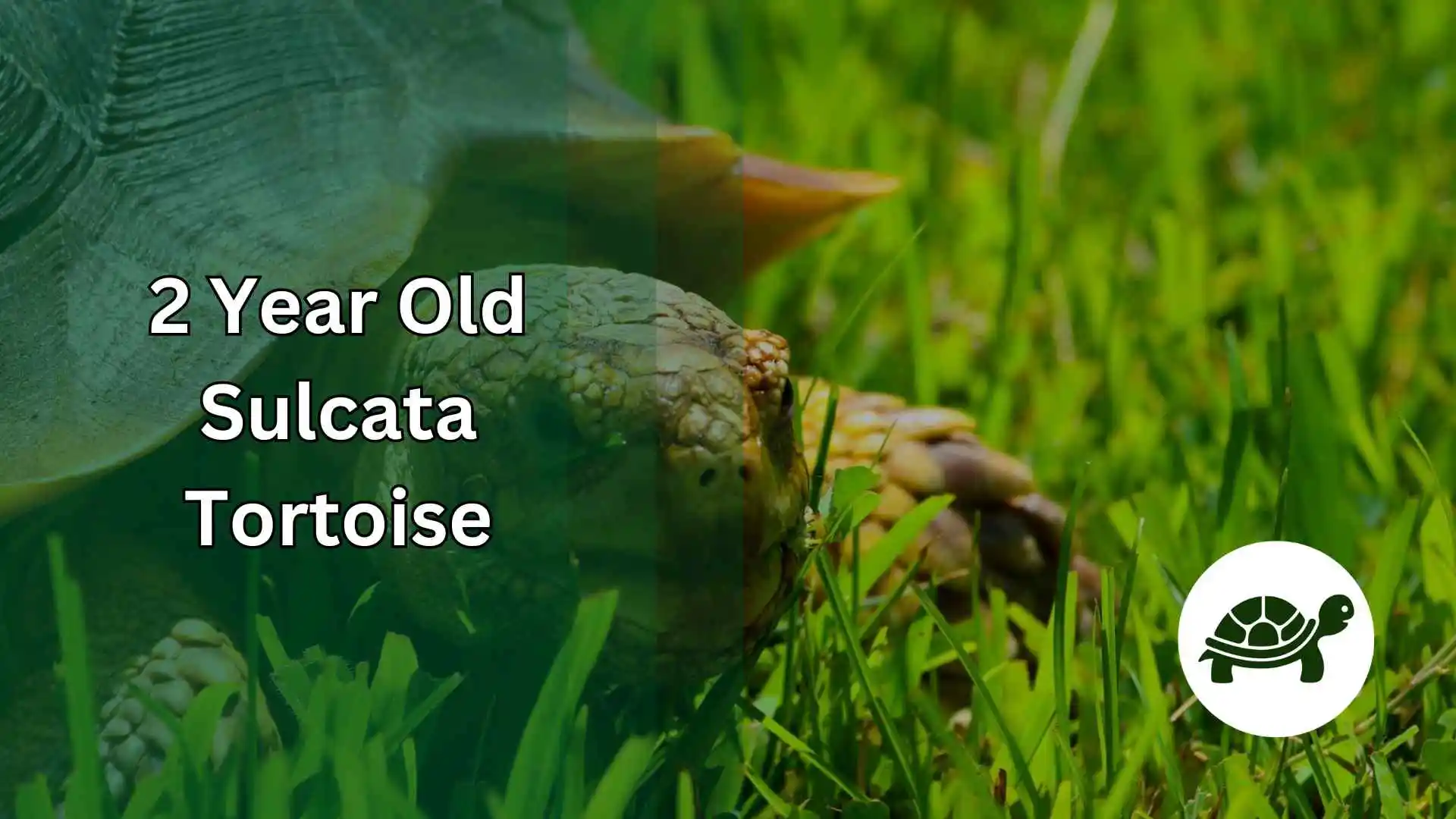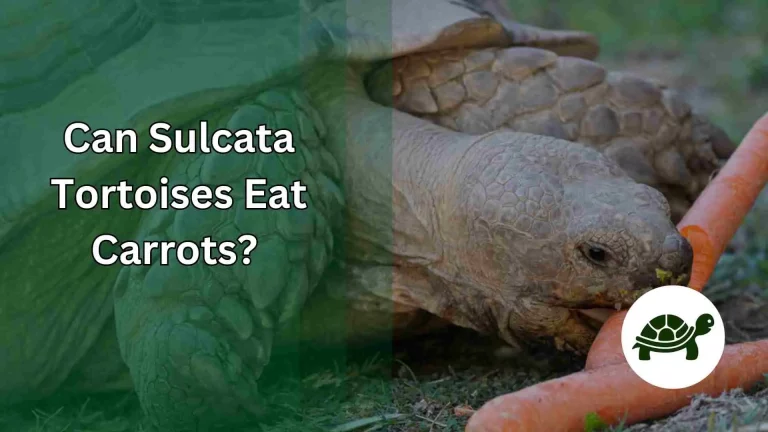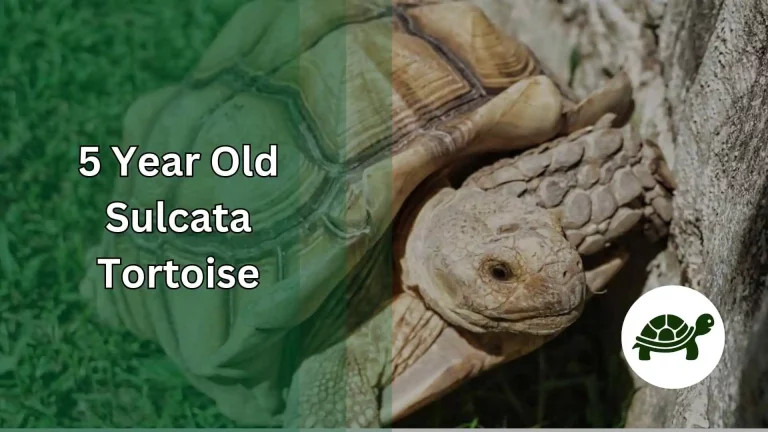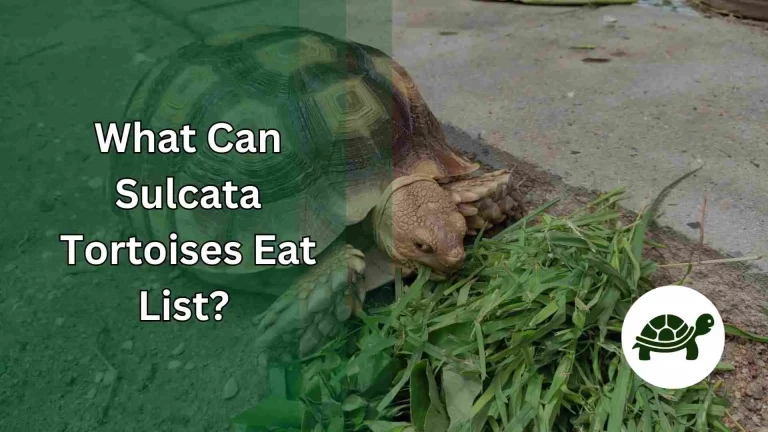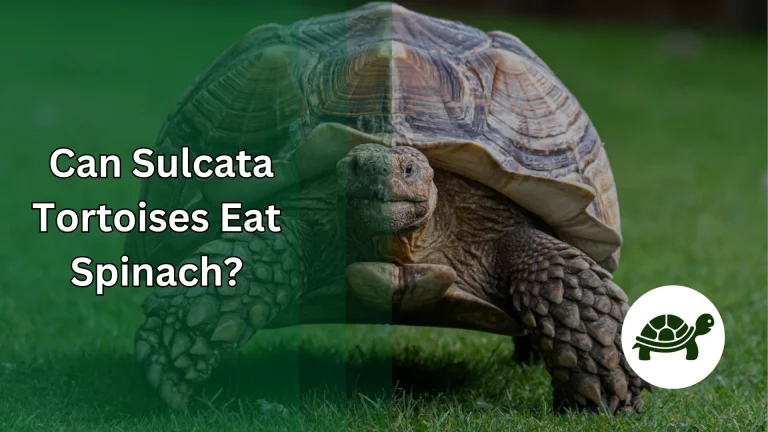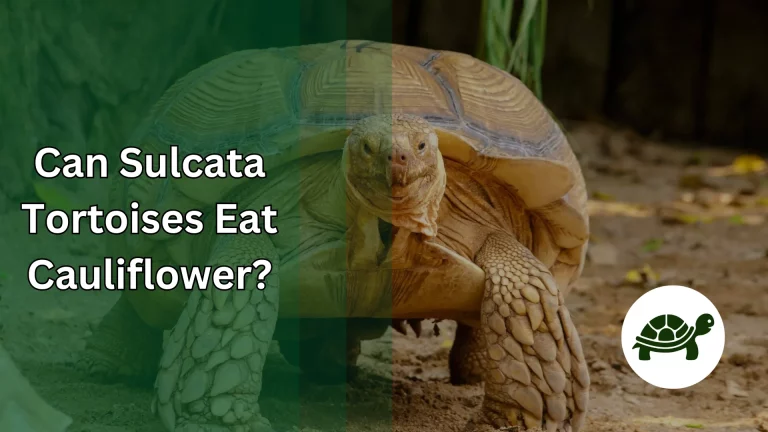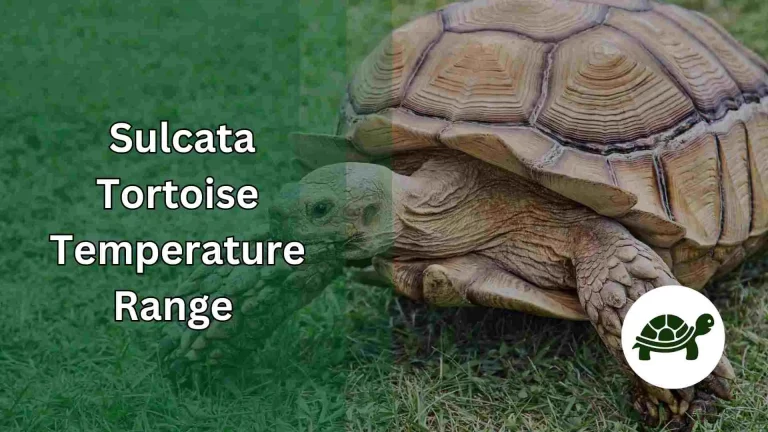2 Year Old Sulcata Tortoise – Everything You Need To Know
Sulcata tortoises, known scientifically as Centrocercus sulcata, are a popular choice among reptile enthusiasts. Originating from the arid regions of Africa, these gentle giants are known for their friendly demeanor and impressive shell that can become a backyard centerpiece. The fascinating journey of nurturing a Sulcata from a palm-sized baby to a hefty adult is a rewarding experience full of unique challenges. In this post, we specifically focus on a pivotal age – the toddler phase of a 2-year-old Sulcata tortoise, delving into what it takes to ensure a healthy, happy, and active tortoise.
The age of two is a special time in a Sulcata’s life, marking a phase where they are no longer the fragile babies, yet not quite the imposing adults they will grow to become. It’s a stage filled with curiosity, growing independence, and noticeable development, both physically and behaviorally. Understanding the nuances of a 2-year-old Sulcata tortoise’s needs is crucial for every responsible pet owner aiming to provide a nurturing environment. Our comprehensive guide aims to shed light on the various aspects of care and attention your shelled companion requires to thrive during this significant life stage.
Investing time and effort in creating a suitable habitat, offering a balanced diet, and engaging in regular health check-ups are a few among the myriad ways to ensure a fulfilling life for your Sulcata tortoise. Through the subsequent sections, we will walk you through the key areas of care, dispelling common myths and providing actionable tips to overcome challenges you might face. So whether you are a seasoned Sulcata enthusiast or a new tortoise parent, this guide is crafted to equip you with the knowledge and confidence to enjoy the rewarding journey of raising a 2-year-old Sulcata tortoise.
Understanding Sulcata Tortoises at Age Two
At the tender age of two, your Sulcata tortoise is akin to a toddler, filled with curiosity and displaying a sense of independence. This period is marked by substantial growth and discernible behavioral traits, making it an exciting time for tortoise parents.
Though still quite young, a 2-year-old Sulcata tortoise showcases a miniature version of the majestic creature it will mature into. As the third-largest species of tortoise in the world, understanding their growth pattern is essential to ensure that they are on the right track to achieving their full potential.
Physical Characteristics
Your Sulcata tortoise will experience a growth spurt around this age, transitioning from being palm-sized to a more noticeable and hefty size. They sport a distinctive spurt in shell growth, which gradually transforms from a soft and vulnerable cover to a harder, more protective shield.
The emergence of the characteristic sulcations (furrows) on the shell also begins to be more prominent at this stage. The intricate design and robust build of the shell serve as a fascinating spectacle and a reminder of the resilient nature of the Sulcata tortoise.
Behavioral Traits
The curious and exploratory nature of Sulcata tortoises shines bright at age two. They become more active, showcasing a penchant for digging and burrowing, which is a natural behavior inherited from their wild ancestors who dwell in arid habitats. Their interactions with their environment and possibly with other tortoises become more pronounced.
It’s a period where they test their boundaries, explore new terrains, and exhibit a captivating blend of independence and playful curiosity. Observing and understanding these behaviors will not only enrich the bond between you and your shelled companion but also aid in creating a nurturing and stimulating environment for them.
Your journey through the toddler years of your Sulcata tortoise’s life is bound to be filled with awe-inspiring moments as you watch them explore and engage with the world around them. Equipping yourself with the right knowledge about their physical and behavioral development at this stage is a stepping stone towards providing a nurturing habitat.
This insight also lays the foundation for foreseeing and catering to the needs of your Sulcata tortoise as they transition into their subsequent life stages. Through a mix of observation, interaction, and tailored care, you can ensure a happy and healthy life for your 2-year-old Sulcata tortoise.
Creating a Suitable Habitat
Creating a comfortable, secure habitat is pivotal for the well-being and overall growth of your 2-year-old Sulcata tortoise. At this age, they are avid explorers, making the design of their living space a crucial aspect of their daily life. Whether you choose an indoor or outdoor enclosure, ensuring it mimics the Sulcata’s natural arid habitat as closely as possible is essential for a thriving tortoise.
Indoor vs. Outdoor Enclosures
Your choice between an indoor and outdoor enclosure largely depends on your living circumstances and the climate of your location. Outdoor enclosures are preferred as they provide a natural environment with ample sunlight, however, if the climate you live in is inconsistent or too cold, an indoor enclosure with adequate heating and lighting is imperative. Investing in a robust, weather-resistant outdoor enclosure can provide your Sulcata with a safe, naturalistic habitat, while a well-ventilated, spacious indoor enclosure can also serve as a cozy dwelling for your growing tortoise.
Essential Elements of a Sulcata-Friendly Habitat
Creating a microclimate within the enclosure that mimics the arid, warm environment Sulcatas are accustomed to is essential. Maintaining a temperature range of 70 to 100°F with basking spots, and ensuring a humidity level of about 40-50% will promote a healthy shell and overall wellness. A combination of heat lamps and UVB lighting will compensate for the lack of natural sunlight in indoor settings, aiding in the synthesis of vitamin D3, which is crucial for calcium absorption.
The substrate within the enclosure should be conducive for digging and burrowing, behaviors inherent to Sulcatas. A mixture of sand and soil or coconut coir provides a suitable digging medium. Also, providing hiding spots and shaded areas is necessary for your tortoise to retreat and cool down. Moreover, an outdoor enclosure should be securely fenced to prevent escapes and ensure safety from potential predators.
Importance of Space and a Proper Enclosure Setup
As Sulcatas are known for their rapid growth, providing a spacious enclosure allows them the freedom to explore, exercise, and engage in natural behaviors. Ensuring that the enclosure is escape-proof, well-ventilated, and free from any hazards is crucial for the safety and happiness of your 2-year-old Sulcata tortoise. Moreover, periodic cleaning and maintenance of the habitat will keep it conducive for your tortoise’s health and comfort.
By meticulously planning and setting up an appropriate habitat, you are laying a foundation for your Sulcata tortoise to flourish. The right balance of heat, light, space, and safety will not only cater to the physical needs of your tortoise but also provide a stimulating environment for them to explore and interact with, promoting a happy, active, and healthy life as they grow and thrive in your care.
Nutrition for Your 2-Year-Old Sulcata
Proper nutrition plays a pivotal role in the overall health, growth, and longevity of your 2-year-old Sulcata tortoise. At this age, they are steadily growing and require a balanced diet rich in necessary nutrients to support their development. Understanding the dietary needs of your Sulcata and providing a varied, nutritious diet will ensure a thriving, happy tortoise with a strong shell and healthy body.
Dietary Requirements
Sulcata tortoises are primarily herbivores, thriving on a diet composed mainly of grasses, hay, and leafy greens. The ideal diet mimics what they would consume in the wild, promoting natural grazing behavior. Here’s a closer look at the variety of greens and hay that can provide a well-rounded nutritional profile for your 2-year-old Sulcata tortoise:
Bermuda Grass

A popular choice for Sulcata tortoises, Bermuda grass is nutrient-rich and provides a good amount of fiber which is essential for their digestive health. It’s a tough, hardy grass that stands up well to grazing and is ideal for promoting natural grazing behavior.
Timothy Hay

This hay is high in fiber and low in protein, making it an excellent choice for Sulcatas. It aids in digestion and ensures a well-functioning gut, making it a staple in the diet of many tortoises.
Other Hays

Other varieties of hay such as Orchard grass hay and Bermuda grass hay also make healthy additions to your Sulcata’s diet, offering variety and different textures for them to explore and enjoy.
Dandelion Greens

These greens are a fantastic source of vitamins A and C, calcium, and other minerals. They also have a slightly bitter taste which many tortoises seem to enjoy.
Collard Greens

Rich in vitamins A, C, and K, as well as calcium, iron, and magnesium, collard greens are another nutritious choice. They also provide a good amount of fiber which is crucial for digestive health.
Mustard Greens

Mustard greens are loaded with antioxidants and are a good source of vitamins A, C, K, and E, folate, and minerals like iron and calcium. They can add a spicy flavor to your Sulcata’s diet, providing both nutritional and sensory variety.
It’s advisable to avoid or limit vegetables and fruits as they can disrupt the digestive system and lead to health issues. Offering a blend of these grasses and leafy greens ensures that your Sulcata receives a diversified array of nutrients, promoting a robust health profile as they grow and mature.
Importance of Fiber and Calcium
A high-fiber diet is crucial for a Sulcata tortoise’s digestive health, aiding in the proper assimilation of nutrients. Incorporating roughage through different types of hays promotes better digestion and a healthier gut. Additionally, calcium is essential for the development of a strong shell and bones.
Providing a calcium supplement or sprinkling cuttlebone powder on their food can help meet their calcium needs. It’s also advisable to have a shallow dish of fresh water available, encouraging hydration, which further aids in digestion and overall health.
Avoiding Nutritional Pitfalls
Steer clear of high-protein, high-sugar, and high-fat foods as they can cause severe health issues in Sulcatas. Offering a variety of edible plants and avoiding reliance on a single type of food will help prevent nutritional imbalances. Ensuring that the food is free from pesticides and other chemicals is also critical for the health of your tortoise.
The journey of nurturing a 2-year-old Sulcata tortoise to maturity is immensely gratifying, and a balanced diet is the cornerstone of this journey. By offering a diversified diet and maintaining a consistent feeding schedule, you pave the way for a healthy, active, and long-lived Sulcata tortoise. The joy of watching your shelled companion thrive on a well-balanced diet is unparalleled, making the effort invested in understanding and catering to their nutritional needs well worth it.
Health and Wellness Check
The journey of raising a 2-year-old Sulcata tortoise is filled with rewarding milestones and a fair share of concerns. Ensuring your tortoise’s health and wellness is paramount for a thriving life. Regular health checks, both at home and with a veterinarian experienced in reptile care, can help identify and address issues early, making the road to recovery smoother and less stressful for both you and your tortoise.
Common Health Issues
At this tender age, Sulcatas can be susceptible to certain health issues. Respiratory infections, shell rot, and metabolic bone disease are among the common ailments that can affect them. Symptoms such as lethargy, loss of appetite, discharge from the nose or eyes, or soft spots on the shell should trigger an immediate vet visit. Early detection and intervention are key to managing and overcoming these health challenges.
Preventive Measures
Maintaining a clean, well-ventilated habitat with the right temperature and humidity levels is the first step in preventing many health issues. A balanced diet rich in essential nutrients and minerals, particularly calcium, promotes a strong shell and robust health.
Additionally, regular soaking can help with hydration and cleanliness, further warding off potential health problems. Observing your tortoise daily for any behavioral or physical changes can also provide early signs of possible health concerns.
Regular Veterinary Check-ups
Scheduling regular check-ups with a vet specialized in reptile care is crucial for monitoring the overall health and development of your Sulcata tortoise. These visits can provide valuable insights into your tortoise’s health, offering an opportunity for early intervention if any issues are identified. It’s also a chance to discuss your tortoise’s diet, habitat, and care routine to ensure you are on the right track for providing a wholesome environment for your Sulcata.

The health and wellness of your 2-year-old Sulcata tortoise are intertwined with the level of care and attention you provide. Engaging in regular health checks and maintaining a conducive living environment are fundamental steps towards nurturing a happy, healthy tortoise.
The assurance that comes with knowing your tortoise is in good health enriches the bonding experience, making the journey of raising a Sulcata tortoise an even more rewarding endeavor.
Socialization and Handling
The unique charm of Sulcata tortoises goes beyond their impressive shells and gentle demeanors; their capability for social interaction and acceptance of handling adds a rewarding dimension to the caretaker-tortoise relationship. During their toddler age of two, Sulcata tortoises are forming behavioral patterns that will follow them through adulthood.

Proper socialization and handling during this time can help shape a friendly, well-adjusted tortoise, enhancing the bond between you and your shelled companion.
Socialization with Humans and Other Animals
Sulcatas are generally docile and can be sociable creatures when acclimated properly. Regular, gentle interactions can help desensitize them to human contact, making routine checks and handling easier as they grow into their large adult size. Introducing your Sulcata to other household pets under supervised, safe conditions can also be a part of their socialization process.
However, ensuring that interactions are stress-free and positive is crucial for fostering a good rapport between your tortoise and other members of your household, be they human or animal.
Handling Techniques
Handling should be done with care to avoid startling or injuring your tortoise. It’s essential to support their body fully, especially their underside, to make them feel secure during handling. Short handling sessions initially, gradually increasing as they become more accustomed, can help build trust.
As Sulcatas are ground-dwelling creatures, keeping handling sessions low to the ground to prevent falls and associated injuries is advisable. This early, gentle handling can make future interactions, such as health checks and relocations, much smoother and less stressful for your Sulcata tortoise.
Creating Positive Interactions
Rewarding your Sulcata with a favorite treat or a gentle rub on its shell during and after handling can create positive associations with the interaction. Creating a calm, quiet environment during handling sessions can also contribute to a more relaxed and receptive tortoise. Understanding your Sulcata’s body language and respecting their comfort zones is vital for nurturing a healthy, trusting relationship.

Engaging in proper socialization and handling practices from a young age can significantly enhance your experience as a Sulcata tortoise caretaker. It’s a nurturing process that requires patience, gentleness, and understanding. The fulfilling bond that evolves from respectful and positive interactions will not only contribute to your Sulcata’s well-being but also enrich the rewarding journey of raising a well-adjusted, sociable Sulcata tortoise.
Exercise and Stimulation
As your 2-year-old Sulcata tortoise transitions from its infant stage, the importance of exercise and mental stimulation becomes increasingly pronounced. These aspects are crucial for ensuring a healthy, happy, and well-adjusted tortoise.
A Sulcata’s natural habitat offers a plethora of opportunities for physical activity and exploration, aspects that you should aim to replicate to foster optimal growth and development.
Encouraging Physical Activity
Sulcatas are known for their love of digging and roaming. Providing a spacious enclosure with ample room to explore encourages natural walking and digging behaviors, which are vital for muscle development and overall fitness. Incorporating varying levels of terrain, such as gentle slopes or safe, climbable structures can also contribute to their physical engagement. If space permits, allowing your Sulcata to roam in a secure outdoor area under supervision can offer an excellent opportunity for exercise and exploration.
Mental Stimulation
Mental stimulation is just as essential as physical activity. Providing a stimulating environment with a variety of textures, hiding spots, and safe objects to interact with can keep your Sulcata’s mind active and engaged.
Incorporating plants, logs, and other natural elements reminiscent of their native habitat can promote exploration and natural behaviors. Rotating toys and different elements within their enclosure can also keep the environment intriguing and new for your tortoise.
Interactive Play
While Sulcatas aren’t known for their playful antics in the same vein as dogs or cats, they can engage in interactive play to some extent. Simple games that encourage movement and exploration can be both stimulating and enjoyable for your tortoise. Placing their favorite foods in interactive feeders or in various spots around their enclosure encourages foraging behaviors, providing both mental and physical stimulation.
Environmental Enrichment
Environmental enrichment can encompass a range of additions to your Sulcata’s habitat. From varying substrates that encourage digging to shelters that provide a sense of security, enriching the environment contributes to a well-rounded and stimulating living space. Each element introduced should promote natural behaviors and provide opportunities for exercise and mental engagement.
Encouraging a healthy level of exercise and providing a stimulating environment are fundamental aspects of caring for your 2-year-old Sulcata tortoise. The benefits extend beyond physical well-being, contributing to a happy, engaged, and mentally stimulated tortoise. As you observe your Sulcata interact with its environment and engage in natural behaviors, the rewards of your efforts in creating a fulfilling and enriching habitat become abundantly clear.
Frequently Asked Questions (FAQs)
Caring for a 2-year-old Sulcata tortoise involves a lot of curiosity and a desire to provide the best environment for your shelled companion. Here are some commonly asked questions to further guide you on this rewarding journey:
1. How fast do Sulcata Tortoises grow?
Sulcata tortoises are among the fastest-growing tortoise species. During their first few years, they can grow quite rapidly, often reaching a size of 10-12 inches in diameter by the age of 2. The growth rate may slow down as they mature, but providing a nutritious diet and ample space for exercise can support healthy growth.
2. What is the lifespan of a Sulcata Tortoise?
With proper care, Sulcata tortoises can live for several decades, often exceeding 50 years. Some have been known to live up to 70 years or more. Ensuring a well-balanced diet, regular veterinary check-ups, and a suitable living environment can contribute to a long, healthy life for your tortoise.
3. How can I ensure my Sulcata Tortoise is getting enough calcium?
Calcium is crucial for shell and bone health. Offering a diet rich in calcium, providing cuttlebone, or using a calcium supplement can help meet their calcium needs. Additionally, ensuring they receive adequate UVB lighting or natural sunlight will help with the absorption of calcium.
4. What should the temperature and humidity be in my Sulcata’s enclosure?
Sulcatas thrive in warm temperatures. Aim for a basking area of around 95-100°F and a cooler area of about 70-80°F. Nighttime temperatures should not drop below 60°F. Maintain a humidity level of around 40-60% to replicate their natural, arid environment and to support healthy shell growth.
5. How often should I take my Sulcata Tortoise to the vet?
Regular veterinary visits are recommended for maintaining good health. An annual check-up is advisable, though more frequent visits may be necessary if any health issues arise. Establishing a relationship with a vet experienced in reptile care can provide invaluable support in caring for your Sulcata tortoise.
The fascinating journey of raising a 2-year-old Sulcata tortoise comes with a variety of questions. The more you learn and engage in proper care practices, the more enjoyable and rewarding the experience becomes. Your Sulcata tortoise is a remarkable creature, and understanding its needs will pave the way for a beautiful, long-lasting companionship.
Conclusion
Embarking on the adventure of raising a 2-year-old Sulcata tortoise is both a rewarding and enlightening endeavor. Through understanding the unique needs and characteristics of Sulcatas at this developmental stage, you are better equipped to provide a nurturing habitat that promotes healthy growth, socialization, and overall wellness.
The bond forged between you and your shelled companion during these formative years is the foundation for a lasting, fulfilling relationship that enriches your life in myriad ways. As you invest time, effort, and love, you contribute to the wellbeing and happiness of your Sulcata, ensuring a vibrant and enriched life for them.
Utilizing the information shared in this blog post as a guide, you’re set on a path of successful Sulcata tortoise care. From establishing a conducive living environment, ensuring a balanced diet, to engaging in regular health checks, every step you take is a stride towards fostering a thriving habitat for your tortoise.
As you delve deeper into the rewarding world of Sulcata care, you become an integral part of a global community dedicated to the preservation and appreciation of these remarkable creatures. Your Sulcata tortoise’s thriving life is a testament to the beauty of nature and the enduring bond between humans and the animal kingdom, a journey well worth every moment invested.

